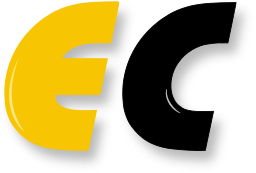ZiSE2025: Zephyr in Science and Education Abbe Center of Photonics Jena, Germany, September 23, 2025 |
| Conference website | https://www.zephyr-sceduconf.org |
| Submission link | https://easychair.org/conferences/?conf=zise2025 |
| Abstract registration deadline | July 11, 2025 |
| Submission deadline | July 11, 2025 |
Call for Papers: ZiSE 2025, 1. International Conference on Zephyr in Science and Education, Jena, Germany, Sept 23, 2025
This conference and workshop aims to bring together lecturers, teachers, researchers, industry practitioners, and individuals in the field of Zephyr in Science and Education to share there experiences, new ideas, latest findings, and state-of-the-art results. Prospective authors are invited to submit articles on topics including, but not limited to:
Topics:
- Training content/curricula for embedded development (esp. Zephyr)
- Methodical teaching approaches in training in system design, software design and embedded software development
- Training on Zephyr
- Zephyr real-time operating system (RTOS) subsystem and interface evaluation
- Embedded Systems Development Training
- Zephyr in robotics (e.g. ROS 2 / micro-ros 2)
- Zephyr in edge AI
- Zephyr community evolution and health
- Distributed systems based on real-time operating systems (sensor systems)
- Operating system architecture with a focus on real-time operating systems
- POSIX OS as the basis for embedded operating systems
- Concepts in Zephyr (e.g. device tree)
- Zephyr in practice - migration of existing applications to Zephyr
- Zephyr in practice - introduction of Zephyr in existing structures/teams
Models of Submissions:
Submissions made to the ZiSE may choose one of the following models:
- Full papers (up to 12 pages + references) for normal research contributions that require longer explanations and discussions; usually feature some form of evaluation and/or broad consideration of related work
- Short papers (up to 6 pages + references) for minor contributions, rather engineering-oriented projects, incomplete projects, less mature research ideas, positional papers, interesting project summaries, software pitches and/or negative observations.
- Brief talk (up to 2 pages) for short communications and for resubmissions of successful research recently published in a full paper at a major conference or in a journal
Pre-Submission:
We offer the possibility of having abstracts and paper outlines thematically reviewed before the full paper is written and submitted. This way, authors can be sure that their planned topic fits the intended focus of the conference. Please note that the final paper will still be independently reviewed and may be accepted or rejected.
Presentation mode:
- Long talk should be presented in a 20-25min presentation followed by a Q & A session of 10-5min.
- Short talk should be presented in a 10-15min presentation followed by a Q & A session of 10-5min.
As a rough guideline, we assume that the length of the presentation correlates with the length of the paper. However, live demonstrations, detailed discussions about teaching and learning setups or similar may also result in short papers benefitting from more time in detailed presentations.
The talk length will be finalized after the review as part of the detailed schedule planning. Please feel free to share your preferred talk length.
Important Dates:
- Pre-Submission for Abstracts and Paper outlines: rolling till May, 2025
- Paper Registration and Submission Deadline: July 11, 2025
- Notification of Acceptance: July 25, 2025
- Registration: Aug 17, 2025
- Camera Ready: Aug 31, 2025
- Conference: Sept 23, 2025
Paper Submission Link: https://easychair.org/conferences/?conf=zise2025
Website: https://www.zephyr-sceduconf.org/
Submissions Guidelines:
Submissions are welcome in English. All papers have to be formatted according to the CEUR-WS formatting guidelines. You can also download an offline version with the style files from http://ceur-ws.org/Vol-XXX/CEURART.zip. It also contains DOCX template files. Papers are to be submitted as PDF files to EasyChair.
All submissions will be reviewed by at least two independent reviewers. All authors of accepted submissions will be invited to the conference to present their work. Accepted in-practice and research papers (full papers and short papers) will also be included in the proceedings.
Proceedings shall be published as open accees and submitted to CEUR-WS.org for online publication
All conference and workshop participants have to register for the ZiSE 2025 conference.
Conference and Workshop organization:
- Steffen Späthe, FSU Jena (steffen.spaethe@uni-jena.de)
- Sandra Kreussler (sandra.kreussler@navimatix.de)
- Stephan Linz (stephan.linz@navimatix.de)
- Tobias Kästner (tobias.kaestner@inovex.de)
Background and Aims
Zephyr is an open source real-time operating system (RTOS) for embedded systems developed by the Linux Foundation. It is used in various areas, e.g. in industrial control systems, radio and sensor systems. The operating system is modular and flexible, supports various hardware architectures and is particularly suitable for devices with limited resources and time-critical applications.
As an open source project, Zephyr is freely accessible and benefits from a large developer community. This ensures rapid innovation, regular updates and extensive documentation.
Zephyr is intended for professional application scenarios and provides possibilities that go beyond the tools of the maker scene. Thanks to its architecture, Zephyr is also suitable for placing existing microcontroller applications on a new, non-proprietary platform. At the same time, Zephyr is supported (technically and financially) by the major chip manufacturers.
It can be assumed that Zephyr will be the standard development platform for embedded systems in the professional environment in the next 3 to 5 years. The existing involvement of Google, Meta, Cariad (VW Group) and also Zeiss underpins this assumption.
By organising the conference on ‘Zephyr in Science and Education’, we want to make the RTOS better known and promote it in (university) education. Over the next few years, students will bring knowledge of the technology to scientific institutions and commercial enterprises, which will hopefully lead to a further spread of its use.
The aims of the planned conference include:
- Increased use of Zephyr in academic education
- Integration of Zephyr in research and science
- Networking of ‘trainers’ to exchange methods and training approaches
- Exchange on teaching content and methodological teaching approaches, particularly in the area of embedded system development
